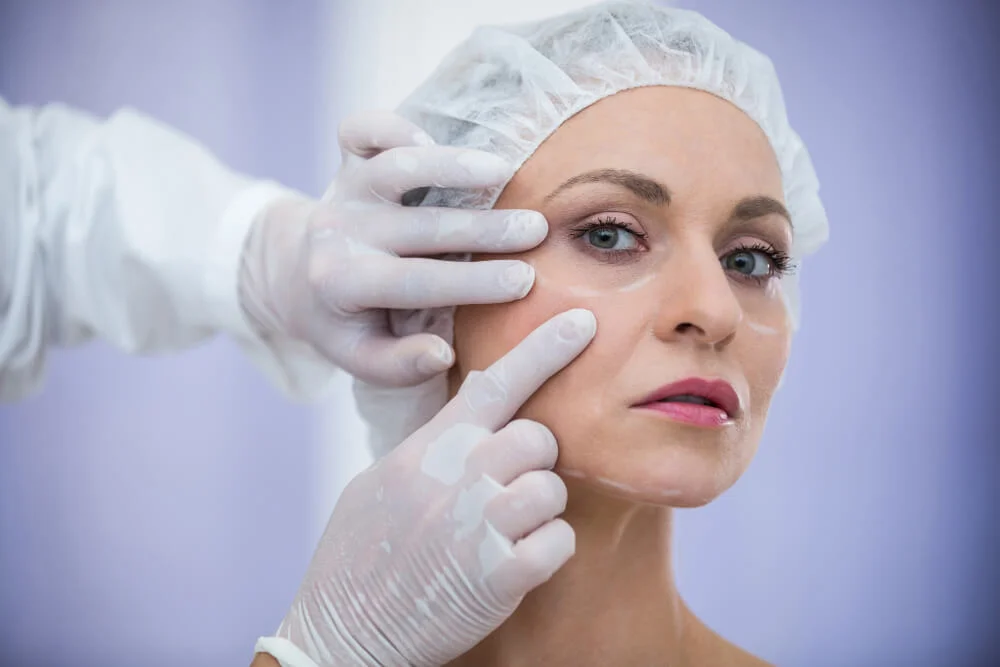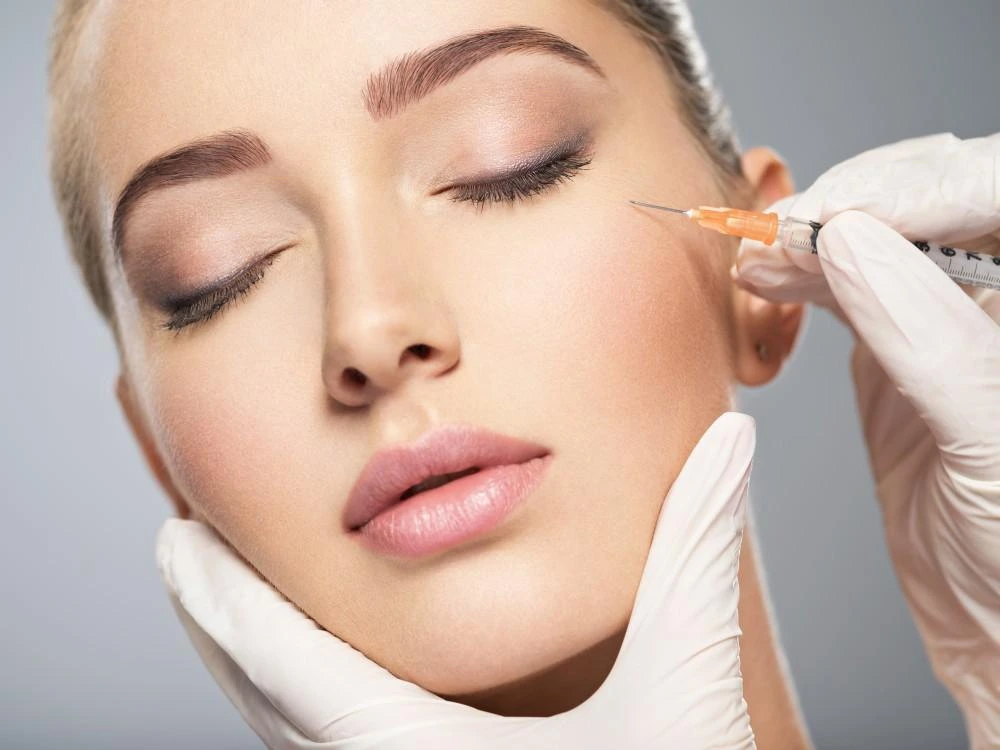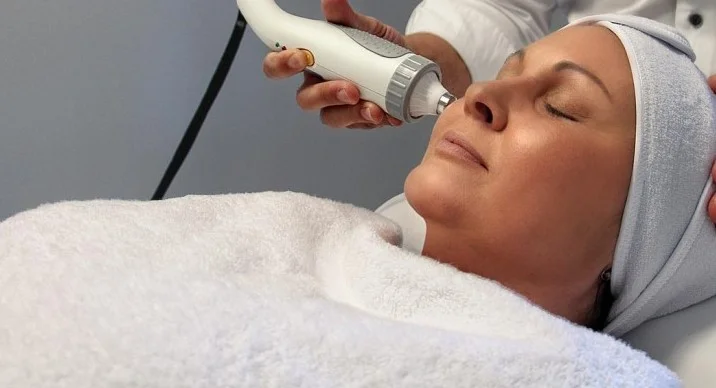Skin Resurfacing in Abu Dhabi
Elyzee Hospital is one of the best hospital centers in Abu Dhabi, specializing in Non-Surgical Procedures.

Skin Resurfacing in Abu Dhabi
Are you longing for smoother, more youthful skin? If you’re longing for healthy-looking skin with minimised imperfections that reflect your inner radiance then look no further; Skin Resurfacing can help! This advanced technique effectively targets various cosmetic conditions like fine lines/wrinkles/hyperpigmentation making them less visible leaving you with improved texture and youthfulness in appearance. A comprehensive guide follows with information curated to educate readers regarding benefits of Skin Resurfacing; prerequisites required for an ideal candidate; detailed insights into treatment procedures; noteworthy aspects during post-treatment recovery while also addressing some pertinent questions or concerns.
The Benefits of Skin Tightening Procedures
For individuals who are seeking ways to improve their skins’ appearance and quality, skin resurfacing can be a valuable option. Its numerous benefits include:
1. Wrinkle Reduction
For those seeking smooth wrinkle free skin look no further than skin resurfacing techniques. Whether through laser treatments or other methods these approaches effectively minimize the appearance of fine lines to promote a firmer looking complexion with youthfully radiant results.
2. Improved Skin Texture
For those who are dealing with textural concerns on their skin – whether its rough patches or acne scarring – opting for the restorative benefits of skin resurfacing could be the answer. By using targeted treatments to smooth out these areas of unevenness and promote an even surface texture overall. This procedure offers a polished finish for a truly radiant appearance.


3. Even Skin Tone
Hyperpigmentation, sun spots, and age spots can cause uneven skin tone and a lack of radiance. Skin resurfacing procedures target these areas, reducing pigmentation irregularities and promoting a more uniform skin tone.
4. Collagen Stimulation
Skin resurfacing techniques stimulate the production of collagen, a vital protein responsible for maintaining the skin’s elasticity and firmness. This collagen boost can lead to improved skin tightness and a more youthful appearance.
5. Reduced Pore Size
Enlarged pores can be frustrating, as they can make the skin appear rough and dull. Skin resurfacing procedures help minimize pore size, resulting in a smoother and more refined complexion.
6. Enhanced Skin Health
By removing the outermost layer of damaged skin cells, skin resurfacing encourages the growth of fresh, healthy skin. Improving the appearance of your skin is just one of the benefits of enhancing its overall health and vitality.
The Best Candidate for Skin Resurfacing
Skin resurfacing is suitable for a wide range of individuals who desire a rejuvenated complexion. The best candidates for this procedure include:
1. Individuals with Fine Lines and Wrinkles: Don’t let mild to moderate facial wrinkling or fine lines caused by age or sun damage get you down. Skin resurfacing is available as an option for addressing these concerns and achieving smoother. More youthful looking skin.
2. Those with Uneven Skin Texture: Individuals struggling with uneven and rough skin texture due to acne scars, enlarged pores or rough patches have an excellent option at hand- Skin resurfacing. The specialized procedure works by refining the surface of your skin resulting in a smoother and polished appearance that significantly boosts your confidence.
3. Individuals with Hyperpigmentation: For anyone experiencing unwanted pigmentation irregularities on the skin – whether from exposure to the sun over time, the aging process, or other factors – there are accessible options for treatment. Skin resurfacing techniques can target these areas and help to restore an even complexion.
4. Those with Sun-Damaged Skin: Several unfavorable consequences may arise due to continuous exposure to sunlight like wrinkles development, pigmentation variations or uneven surface texture contamination. Nevertheless, an efficient practice known as skin resurfacing presents itself as a viable solution addressing related age-related concerns facilitated by photodamage inflicted after extensive moments under sunlight while reinstituting youthfulness back into your complexion.
Consultation with Doctor and Preparation for the Procedure
To ensure optimal results from any skin resurfacing procedures it is crucial that patients schedule prior consultations with expert doctors specializing in either cosmetic dermatology or plastic surgery fields. Throughout these initial meetings specially designed according to patient needs, personal discussions around their concerns are had along with their desired goals and individual medical histories are analyzed closely by skilled physicians taking all essential information into consideration before assessing whether candidates are feasible for each unique treatment offered. Finally informed recommendations on suitable options intended solely based on patients’ specific needs are advised.
Taking all factors into account, adhering carefully to specific directives prescribed by your practitioner ahead of time is integral to obtaining desirable outcomes for the proceeding. Hints may cover abstaining from certain medications and skincare commodities like blood-thinning agents or retinol creams since their use can spar risks of unwelcome aftereffects. It thus remains imperative that one observes and carries out such advice diligently for optimum results.
What's Happening During the Procedure
To perform skin resurfacing. There exist multiple techniques. And each has its distinct approach. The most commonly implemented methods include:
1. Laser Resurfacing: This technique utilizes laser energy to precisely remove the outer layers of damaged skin. The laser energy promotes collagen production and stimulates the growth of new, healthy skin cells.
2. Chemical Peels: Chemical peels involve applying a solution to the skin that causes controlled exfoliation of the outer layers.
3. Microdermabrasion: Microdermabrasion uses a handheld device to exfoliate the outermost layer of the skin using tiny crystals or a diamond-tipped wand. This gentle abrasion promotes skin renewal and reveals a smoother complexion.
4. Dermabrasion: Dermabrasion involves the use of a high-speed rotating brush or diamond fraise to remove the outer layers of the skin. This technique is particularly effective in treating deeper wrinkles and scars.
The specific details of the procedure will depend on the chosen technique and the areas being treated. As a rule, the medical process is carried out as an outpatient arrangement using minor sedation or local anesthesia to guarantee your ease. Your physician will make all efforts to keep you secure throughout the process.
After the Procedure and Recovery
Following the skin resurfacing procedure, you can expect some temporary side effects and a recovery period. These may include:
1. Redness and Swelling: Your skin may appear red and slightly swollen immediately after the procedure. This is a normal response and typically subsides within a few days.
2. Sensitivity and Discomfort: The treated regions of your body might result in some amount of tenderness and unease. Which could possibly be uncomfortable. Your medical advisor could offer some relief by prescribing specialized medication or suggesting over the counter medicines to suitably manage the discomfort.
3. Peeling and Flaking: When undergoing certain treatments for your skin its’ possible for peeling or flaking to occur as the outer layers shed and fresh new skin takes its place. Remember to treat this process with gentleness- after all. It is a natural part of your body’s healing journey.
4. Sun Protection: Preserving your fresh resurfaced skin from sun damage is vital to avoid further complications. Its imperative that you follow your physician’s exact post procedure skin care instructions which could involve taking precautions around direct sunlight, utilizing a high quality sunscreen product, and dressing in defensive clothing.
To secure a smooth healing process during rehabilitation period it is important that the patient strictly complies with all directives issued by their medical practitioner. Vital instructions such as maintaining high level of hygiene within targeted areas ,topical application medication exercise though all recommended medications prescription are fully depleted while adhering strictly to appointment date schedule cannot be taken lightly during this period in addition doctors can provide further directions on optimizing patients well-being through close supervision guidance decipherment of pertinent queries raised by patients while keeping a keen eye on individuals progress recovery rate upon treatment administration.
The Final Result
As healing occurs following treatment for resurfacing your facial tissue; each day reveals improvement continuing towards full benefits from this process-taking hold giving noticeable benefits gradually building over time resulting from these procedures Each person recovers differently contributing their biology being considered with method chosen You will find improvements result when engaged anywhere However generally speaking all people notice improvements showing up readily observable difference available When accomplished one discovers refreshed complexion appearing more youthful along with smoother or offering reduction where fine lines once existed or hyperpigmentation revealing smaller amounts appearing Additionally an increase takes place within collagens creating firmer or more elastic skin.
Conclusion
For those who wish to revive their skin’s youthful appearance by dealing with issues such as wrinkles or pigmentation that have set in over time, Skin resurfacing is an excellent solution. Nonetheless excellent outcomes result from choosing competent experts who guide you through the treatment journey while observing vital procedures such as preparation steps before the operation or following post-procedure aftercare guidelines strictly .We encourage potential patients looking at experiencing these benefits to consult reputable dermatologists who can tailor-make this specialized treatment in line with their individual needs.

Q&A
Most skin resurfacing techniques involve minimal discomfort, which can be managed with local anaesthesia or light sedation.
Most skin resurfacing techniques involve minimal discomfort, which can be managed with local anaesthesia or light sedation.
Depending on the approach implemented and individual variables the duration required for recovery may vary. Generally it can extend from several days to multiple weeks. Your medical professional will provide you with tailored instructions and recommendations to promote ideal healing.
Make An Appointment

